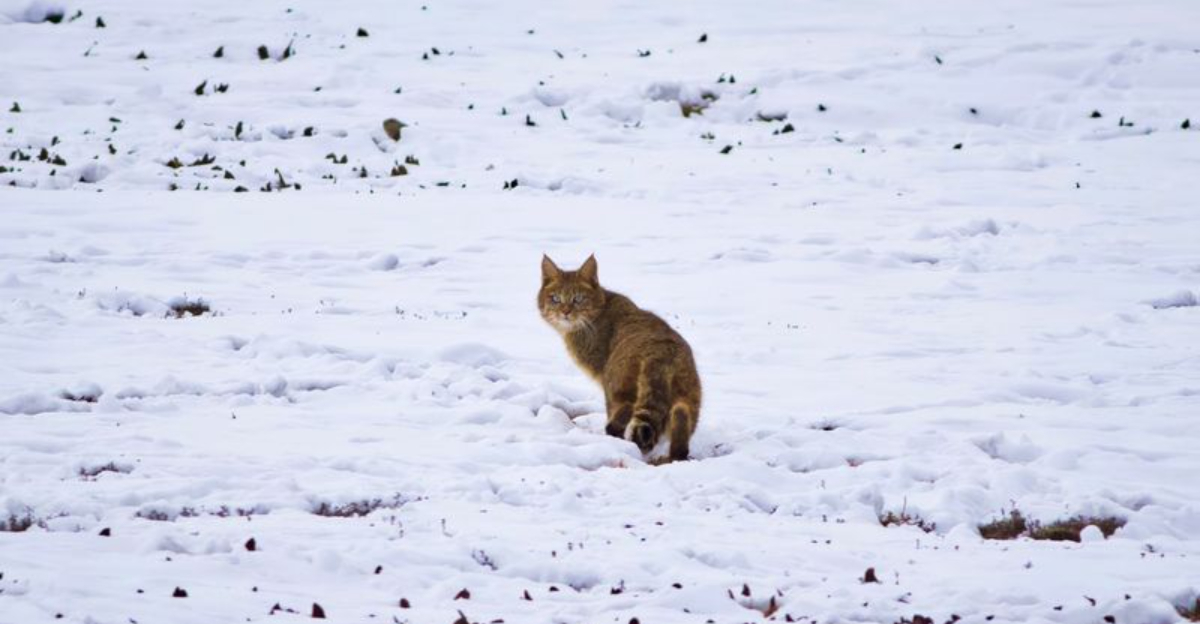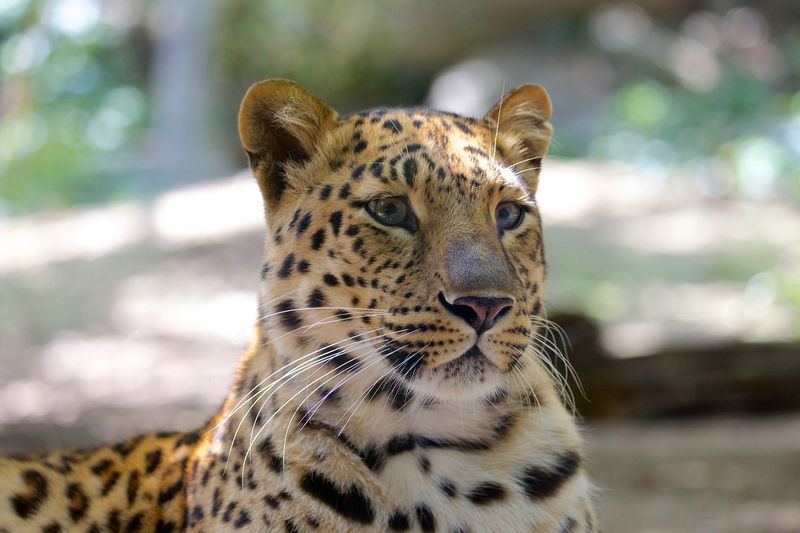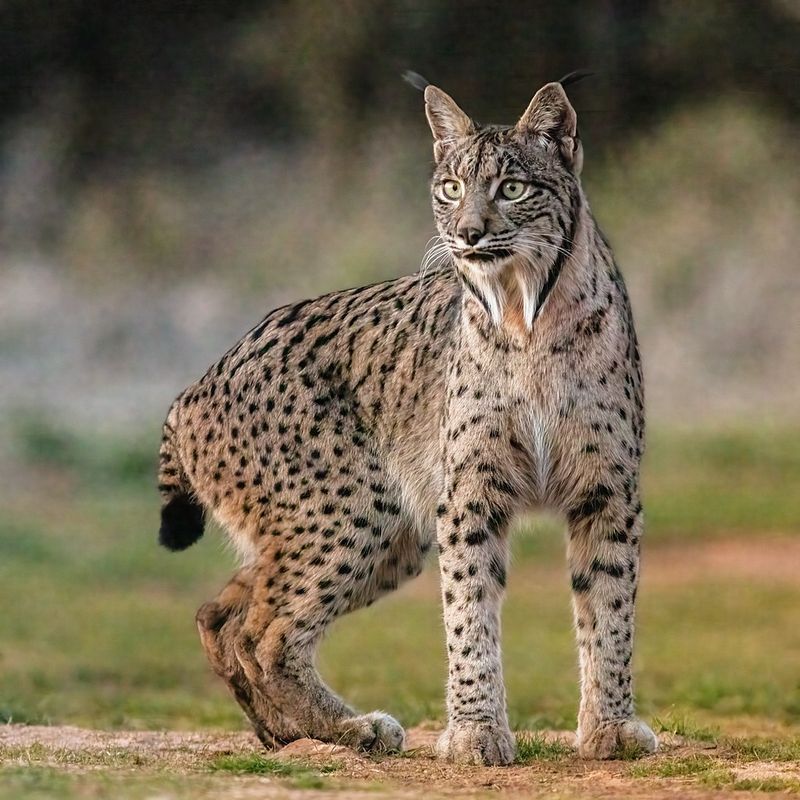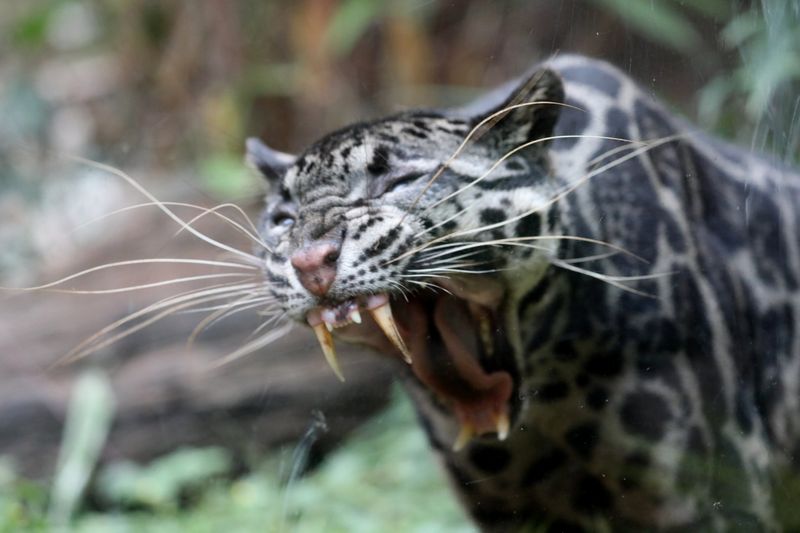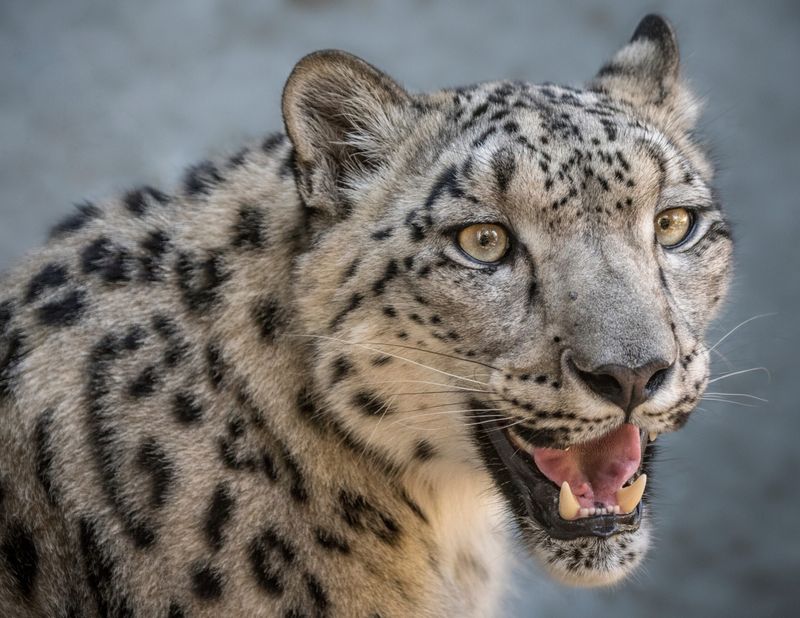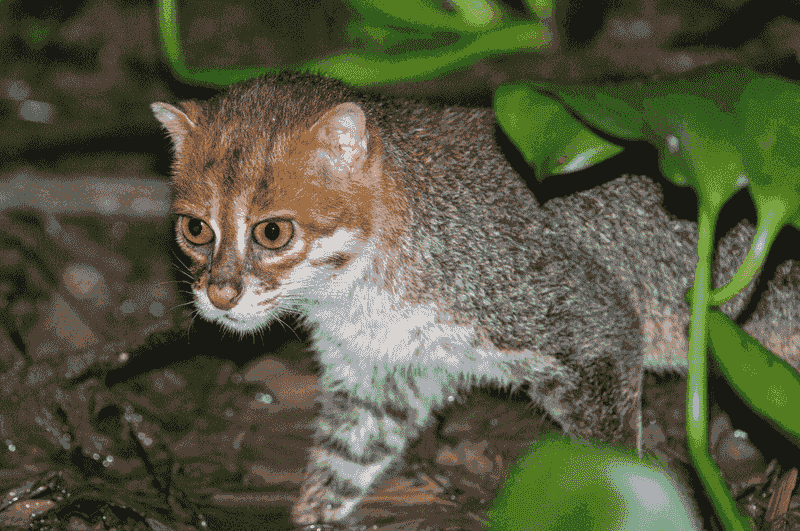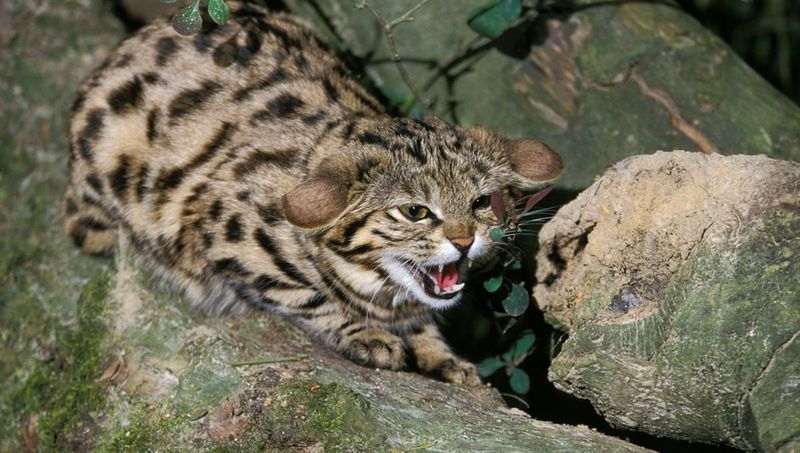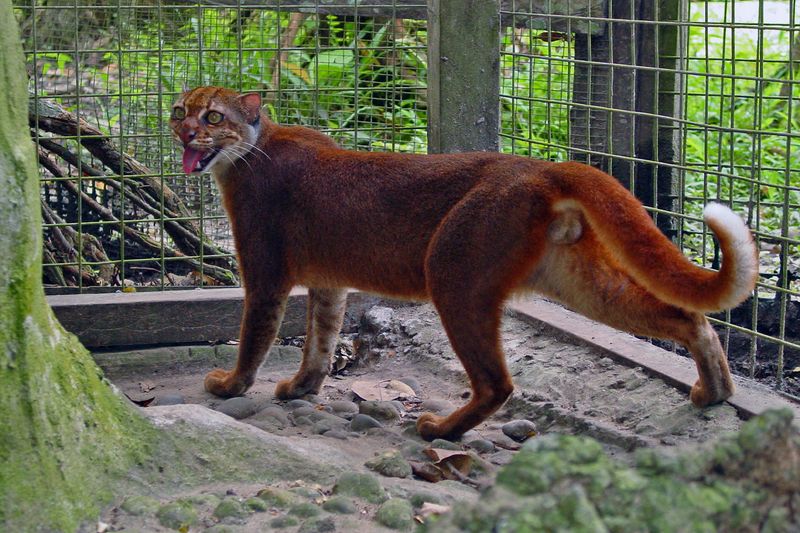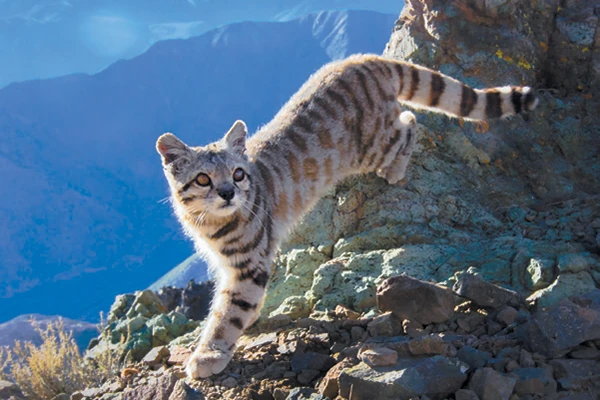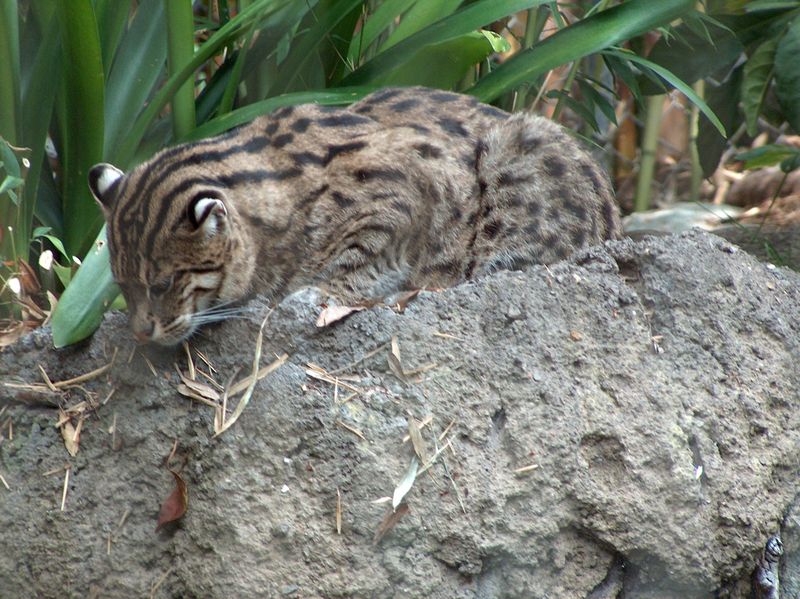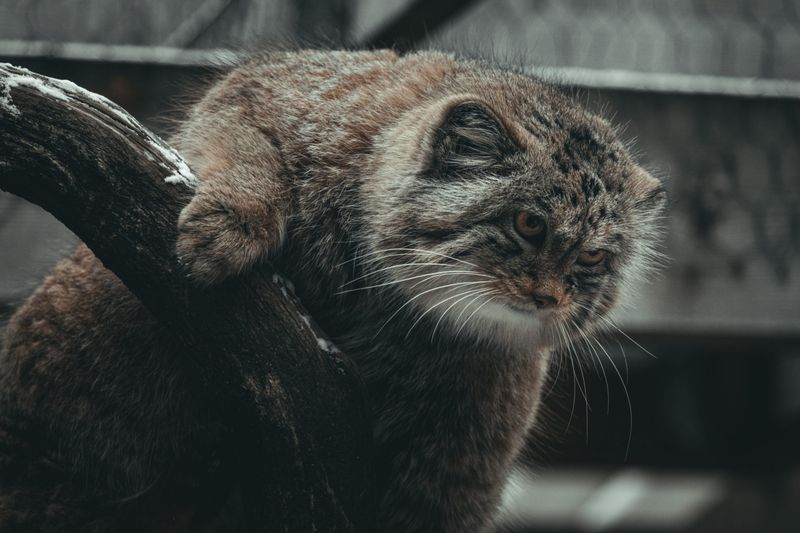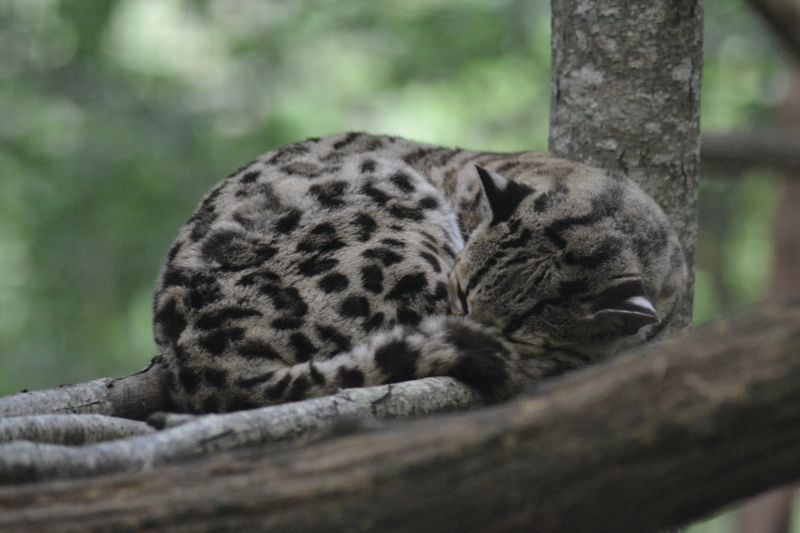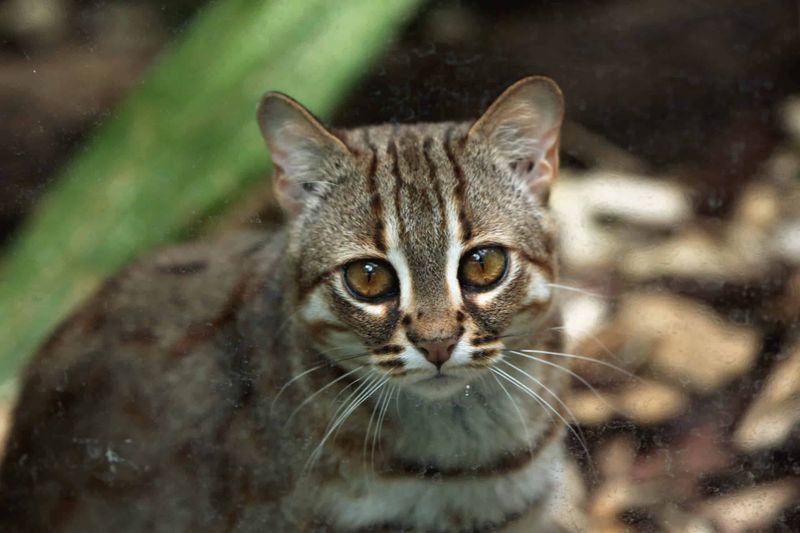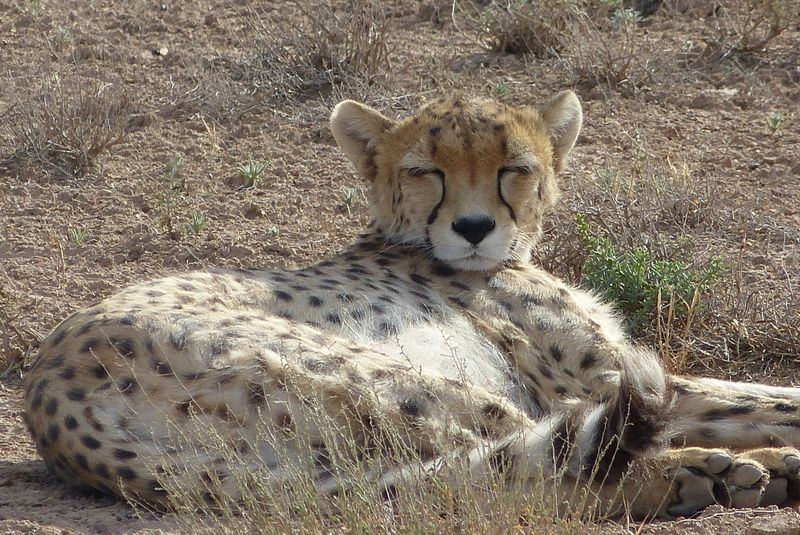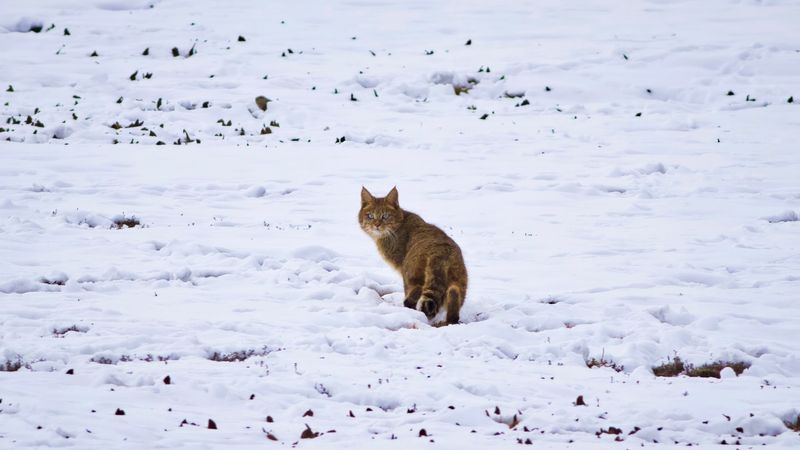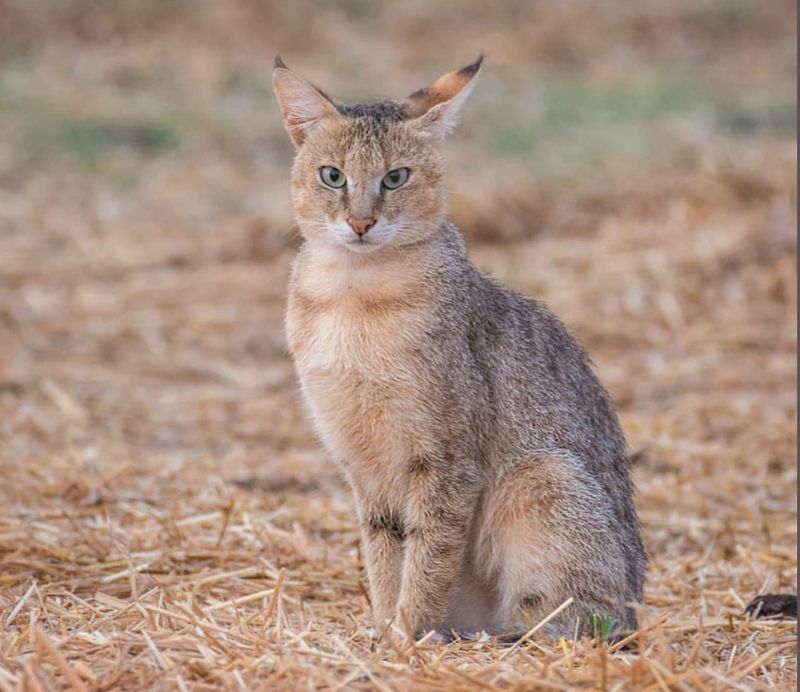📖 Table of Content:
- 1. Amur Leopard (Panthera pardus orientalis)
- 2. Iberian Lynx (Lynx pardinus)
- 3. Sunda Clouded Leopard (Neofelis diardi)
- 4. Snow Leopard (Panthera uncia)
- 5. Flat-Headed Cat (Prionailurus planiceps)
- 6. Black-Footed Cat (Felis nigripes)
- 7. Borneo Bay Cat (Catopuma badia)
- 8. Andean Mountain Cat (Leopardus jacobita)
- 9. Fishing Cat (Prionailurus viverrinus)
- 10. Pallas’s Cat (Otocolobus manul)
- 11. Margay (Leopardus wiedii)
- 12. Rusty-Spotted Cat (Prionailurus rubiginosus)
- 13. Asiatic Cheetah (Acinonyx jubatus venaticus)
- 14. Chinese Mountain Cat (Felis bieti)
- 15. Jungle Cat (Felis chaus)
From dense rainforests to remote mountain ranges, these incredible predators are struggling to survive as their habitats shrink due to deforestation, urban expansion, and climate change. Many species that once roamed freely in vast territories are now confined to fragmented landscapes, making it harder for them to hunt, breed, and thrive. As human activities encroach upon their environments, conflicts between people and wild cats are increasing, further endangering their populations. Without urgent intervention, some of these species could vanish forever.
Across the globe, wild cats face numerous threats beyond habitat loss. Poaching remains a significant danger, as some species are hunted for their fur, bones, and body parts used in illegal wildlife trade. Others suffer from the decline of their natural prey, forcing them into closer contact with humans and increasing the risk of retaliation killings. Road accidents, pollution, and disease transmission from domestic animals further contribute to their dwindling numbers. Despite these challenges, conservationists are working tirelessly to protect these felines through habitat restoration, anti-poaching efforts, and breeding programs.
This blog post explores 15 wild cat species that are in peril, highlighting the unique struggles each faces and the efforts being made to secure their future. From the rare Amur leopard of Russia to the elusive Andean mountain cat of South America, these species represent the diversity and beauty of wild feline populations. Understanding their plight is the first step in advocating for stronger conservation measures and sustainable practices that benefit both wildlife and humans. While the challenges are immense, there is still hope for these incredible animals if global efforts continue to support their protection.
1. Amur Leopard (Panthera pardus orientalis)
The Amur Leopard, critically endangered, roams the snowy forests of Russia and China. With its striking spotted coat, it faces immense threats from habitat destruction, poaching, and prey depletion. Fewer than 120 individuals remain in the wild, making it one of the rarest big cats. Conservationists are implementing anti-poaching measures and habitat protection to stabilize their numbers. Efforts also focus on increasing their prey base, as the depletion of deer and hare populations continues to be a significant issue. The survival of this majestic species depends on continued conservation initiatives.
2. Iberian Lynx (Lynx pardinus)
Once on the brink of extinction, the Iberian Lynx now finds hope through reintroduction programs in Spain and Portugal. This endangered species, with its distinctive tufted ears and short tail, thrives in Mediterranean scrubland. Habitat loss and a decline in rabbit populations, its primary prey, posed significant threats. Conservation efforts have slowly increased its numbers but road accidents remain a concern. The continued recovery of this feline marvel hinges on habitat restoration and maintaining a stable prey population. Public awareness campaigns are crucial to further support its conservation.
3. Sunda Clouded Leopard (Neofelis diardi)
In the rainforests of Borneo and Sumatra, the Sunda Clouded Leopard moves with elusive grace. Classified as vulnerable, it faces the relentless threat of deforestation and poaching. Its cloud-like spots provide camouflage, yet logging and palm oil plantations continue to erode its habitat. Conservationists are working tirelessly to halt illegal pet trade that targets this species. Protecting its environment is key, as is fostering community involvement in conservation efforts. Eco-tourism and sustainable practices offer pathways to preserving the lush habitats where this unique feline resides.
4. Snow Leopard (Panthera uncia)
Known for their ghost-like presence, Snow Leopards inhabit the rugged mountains of Central and South Asia. Vulnerable to poaching for their striking fur, they also face threats from climate change and human-wildlife conflict. Conservationists are focused on reducing poaching and fostering coexistence with local communities. Educational programs aim to raise awareness about the importance of these majestic creatures. Efforts to expand protected areas and improve livestock management techniques are also underway. The survival of the snow leopard hinges on a multi-pronged approach that addresses both ecological and social challenges.
5. Flat-Headed Cat (Prionailurus planiceps)
The Flat-Headed Cat thrives in the wetlands of Southeast Asia. Its survival is intimately linked to these rapidly vanishing habitats. Deforestation and agricultural expansion pose significant threats, as do pollution and hunting. Conservation efforts focus on protecting wetland ecosystems and raising awareness about this unique species. Collaborative efforts with local communities aim to promote sustainable land use practices. The future of the Flat-Headed Cat depends on preserving its natural habitats and fostering a deeper understanding of its ecological role.
6. Black-Footed Cat (Felis nigripes)
In the grasslands of Southern Africa, the Black-Footed Cat, though small and vulnerable, is a fierce hunter. Its habitat is increasingly fragmented by human activities, and diseases from domestic animals pose significant risks. Conservationists are working to protect and restore its habitat while monitoring health risks. This cat, known for its high hunting success rate, faces challenges that require both ecological and veterinary solutions. Public outreach and education are vital to foster coexistence between wildlife and human communities. Efforts to ensure healthy ecosystems will benefit the Black-Footed Cat and other native species.
7. Borneo Bay Cat (Catopuma badia)
Its distinctive reddish-brown coat provides excellent camouflage, allowing it to blend seamlessly into the dense forest undergrowth. Unfortunately, widespread deforestation and hunting have placed this species at great risk, as logging and land conversion continue to destroy its habitat. Conservation efforts focus on protecting its dwindling environment and increasing public awareness of this mysterious feline. environmental policies. With its habitat shrinking rapidly, urgent action is needed to curb illegal hunting and prevent further destruction of Borneo’s forests. Scientists and conservationists are working to gather more data on this secretive species to better understand its needs and develop effective protection strategies. Encouraging responsible land use and sustainable forestry practices can help mitigate the damage caused by human activities.
8. Andean Mountain Cat (Leopardus jacobita)
High in the Andes Mountains of South America, the Andean Mountain Cat is a rare and elusive predator. Endangered, it faces threats from habitat degradation, hunting, and loss of prey. Mining and agricultural activities continue to encroach on its territory. Conservationists are striving to protect its habitat and ensure the availability of its prey. The Andean Mountain Cat relies on international cooperation for its survival, as its range spans across borders. Local education programs aim to reduce hunting and foster appreciation for this unique species. Preserving high-altitude ecosystems is vital for its continued existence.
9. Fishing Cat (Prionailurus viverrinus)
Vulnerable yet resilient, this interesting wild cat thrives in the wetlands of South and Southeast Asia. These ecosystems, however, are under threat from development and agriculture. As wetlands are drained, Fishing Cats lose their hunting grounds, putting pressure on their survival. Conservation programs target wetland preservation and poaching reduction. Community engagement is vital to create sustainable practices that benefit both humans and wildlife. Encouraging eco-friendly tourism can help raise awareness and funds for conservation. Protecting these cats is synonymous with protecting the biodiverse wetlands they inhabit.
10. Pallas’s Cat (Otocolobus manul)
Pallas’s Cat, with its thick fur and expressive face, is uniquely adapted to the harsh environments of Central Asia. However, habitat loss, hunting, and disease threaten its population. Its fur, prized in the pet trade, makes it a target for poachers. Conservation efforts focus on protecting its habitat and educating the public about the importance of biodiversity. Veterinary programs aim to combat diseases spread by domestic animals. To ensure its future, collaboration across countries is essential. The survival of Pallas’s Cat is a testament to the resilience of adaptation.
11. Margay (Leopardus wiedii)
A master of arboreal life inhabits the tropical forests of Central and South America. Near threatened, it faces significant pressures from deforestation and the illegal pet trade. Its ability to navigate trees with ease is a vital adaptation, yet habitat destruction limits its range. Conservationists focus on protecting forest habitats and enforcing legal measures to curb the pet trade. Public education campaigns highlight the Margay’s role in forest ecosystems. Collaborations with indigenous communities promote sustainable land use practices. The future of the Margay is closely tied to the health of forest environments.
12. Rusty-Spotted Cat (Prionailurus rubiginosus)
The Rusty-Spotted Cat is the smallest wild cat species, residing in India, Sri Lanka, and Nepal. Deforestation and human expansion threaten its survival, as it competes for space and resources. Conservation efforts focus on habitat preservation and community engagement. Education programs aim to reduce human-wildlife conflict and promote sustainable practices. The Rusty-Spotted Cat’s survival is a reminder of the intricate balance between biodiversity and human development. Protecting small, often overlooked species contributes to broader ecosystem health. Efforts to highlight its plight are gaining momentum.
13. Asiatic Cheetah (Acinonyx jubatus venaticus)
Critically endangered, the Asiatic Cheetah exemplifies the fragility of life in Iran’s arid landscapes. With fewer than 50 individuals in the wild, it faces threats from habitat loss, poaching, and vehicle collisions. Conservationists employ satellite tracking to monitor movements and protect critical habitats. Public awareness initiatives aim to prevent poaching and promote coexistence. Efforts to expand protected areas and implement road safety measures are underway. The survival of this elegant predator highlights the urgent need for comprehensive conservation strategies. Its plight serves as a poignant reminder of the interconnectedness of species and ecosystems.
14. Chinese Mountain Cat (Felis bieti)
Vulnerable and mysterious, this small cat roams the remote grasslands of China. Habitat loss, a decline in prey, and human-wildlife conflict pose significant threats. Rarely seen, it is often overshadowed by more charismatic species. Conservation efforts focus on habitat protection and research to understand its ecology. Collaborations with local herders aim to reduce conflict and safeguard its future. Public education campaigns highlight its role in the ecosystem. The survival of the Chinese Mountain Cat is emblematic of the challenges faced by lesser-known species. Its conservation depends on fostering coexistence with human communities.
15. Jungle Cat (Felis chaus)
While not critically endangered, the Jungle Cat faces declining populations across Asia, the Middle East, and North Africa. Its adaptability is tested by habitat loss, hunting, and human encroachment. Conservation efforts focus on habitat restoration and reducing hunting pressures. Public education campaigns emphasize the importance of coexistence and biodiversity. By promoting sustainable agricultural practices, communities can help preserve critical habitats. The Jungle Cat’s resilience offers hope, yet its future requires continued vigilance and conservation action. Its survival contributes to the ecological balance and health of diverse ecosystems.
